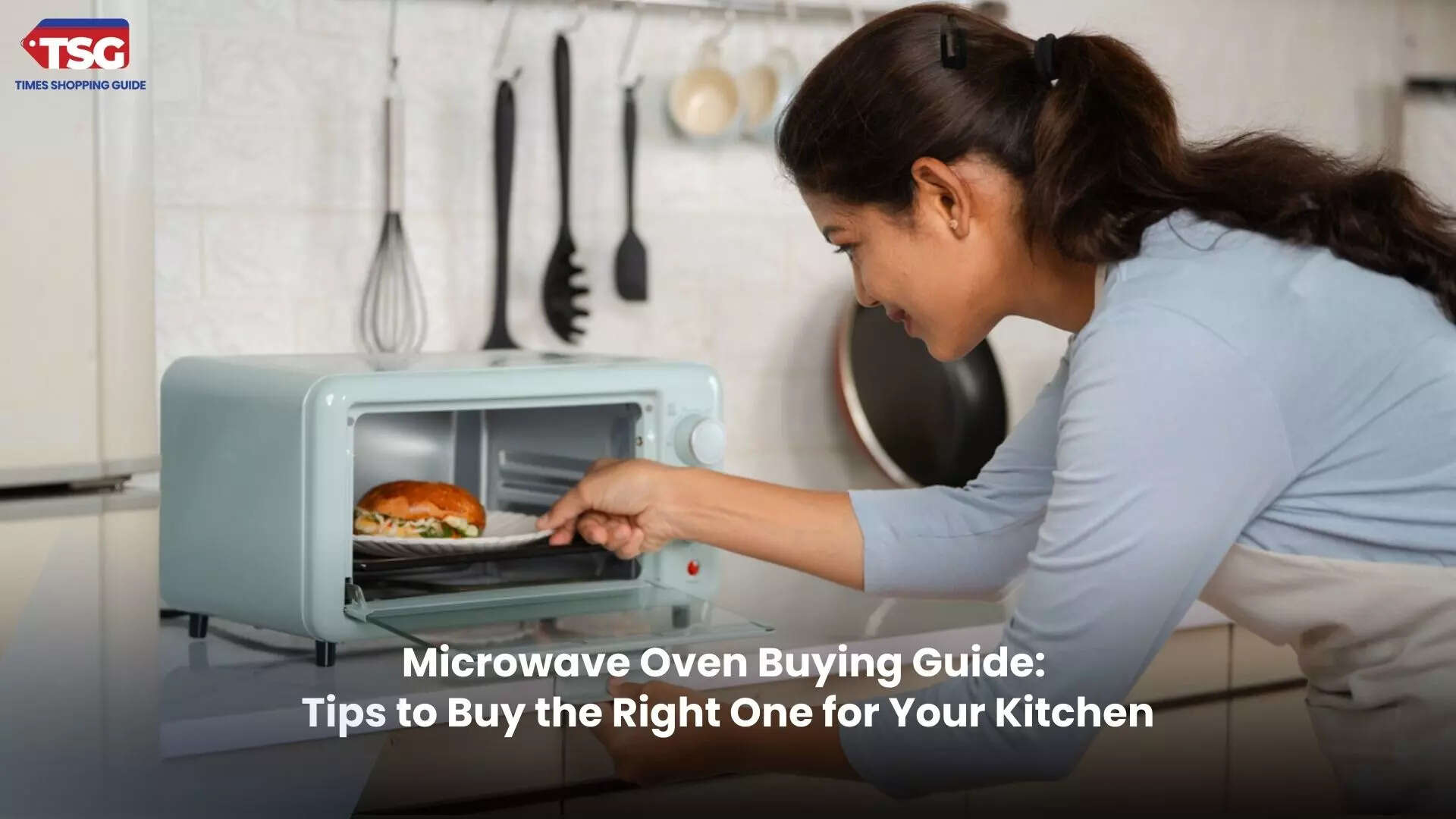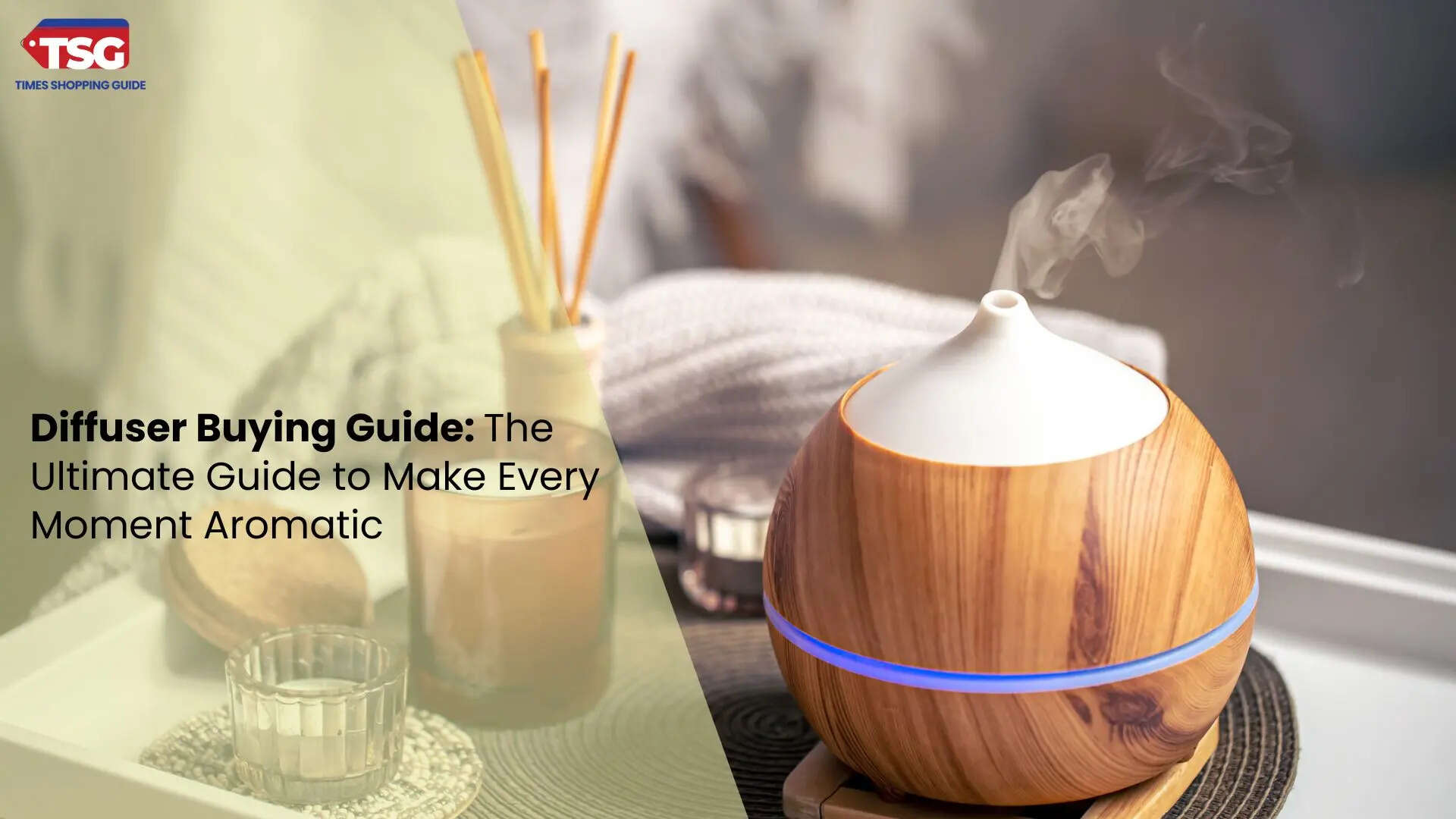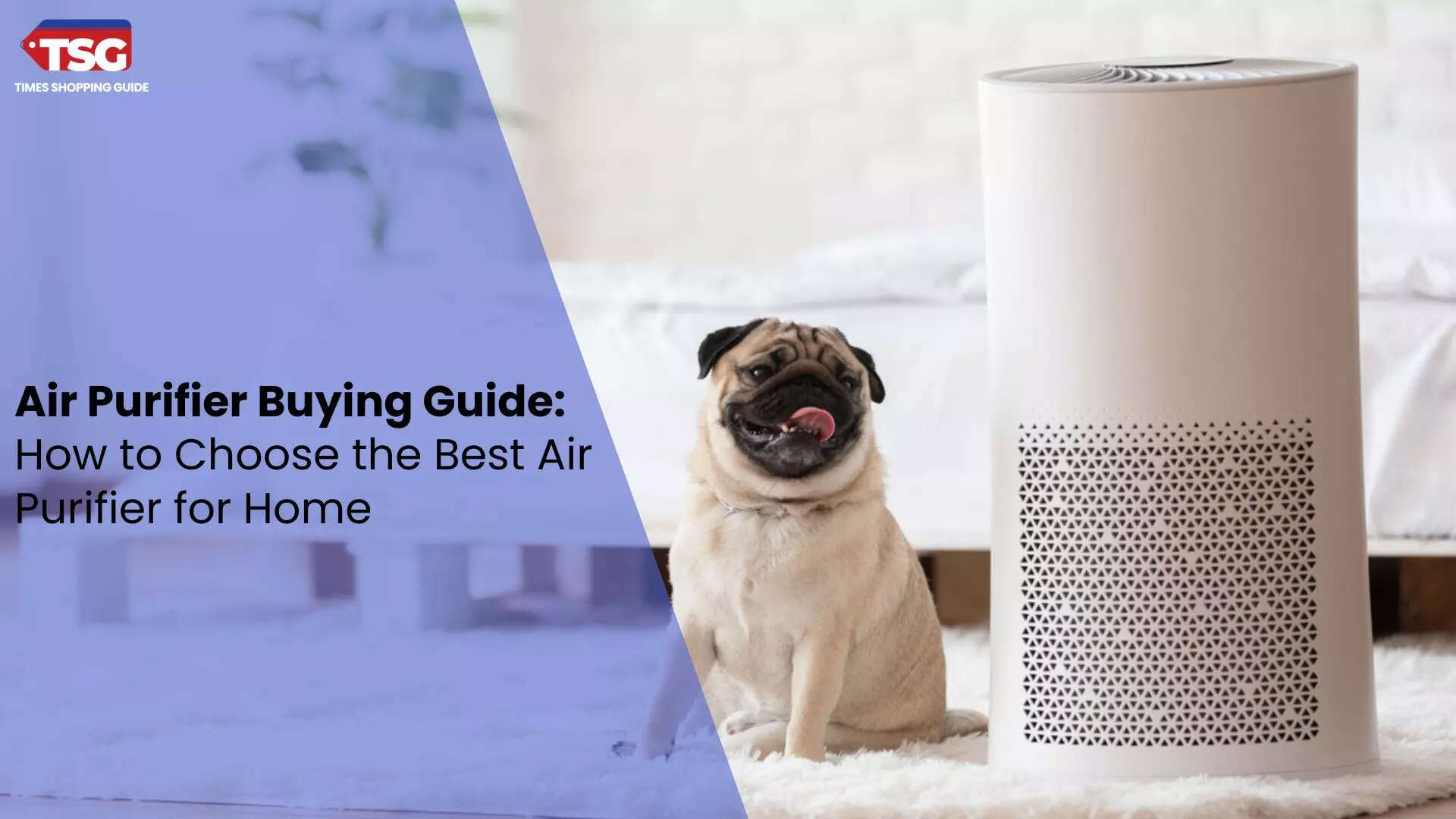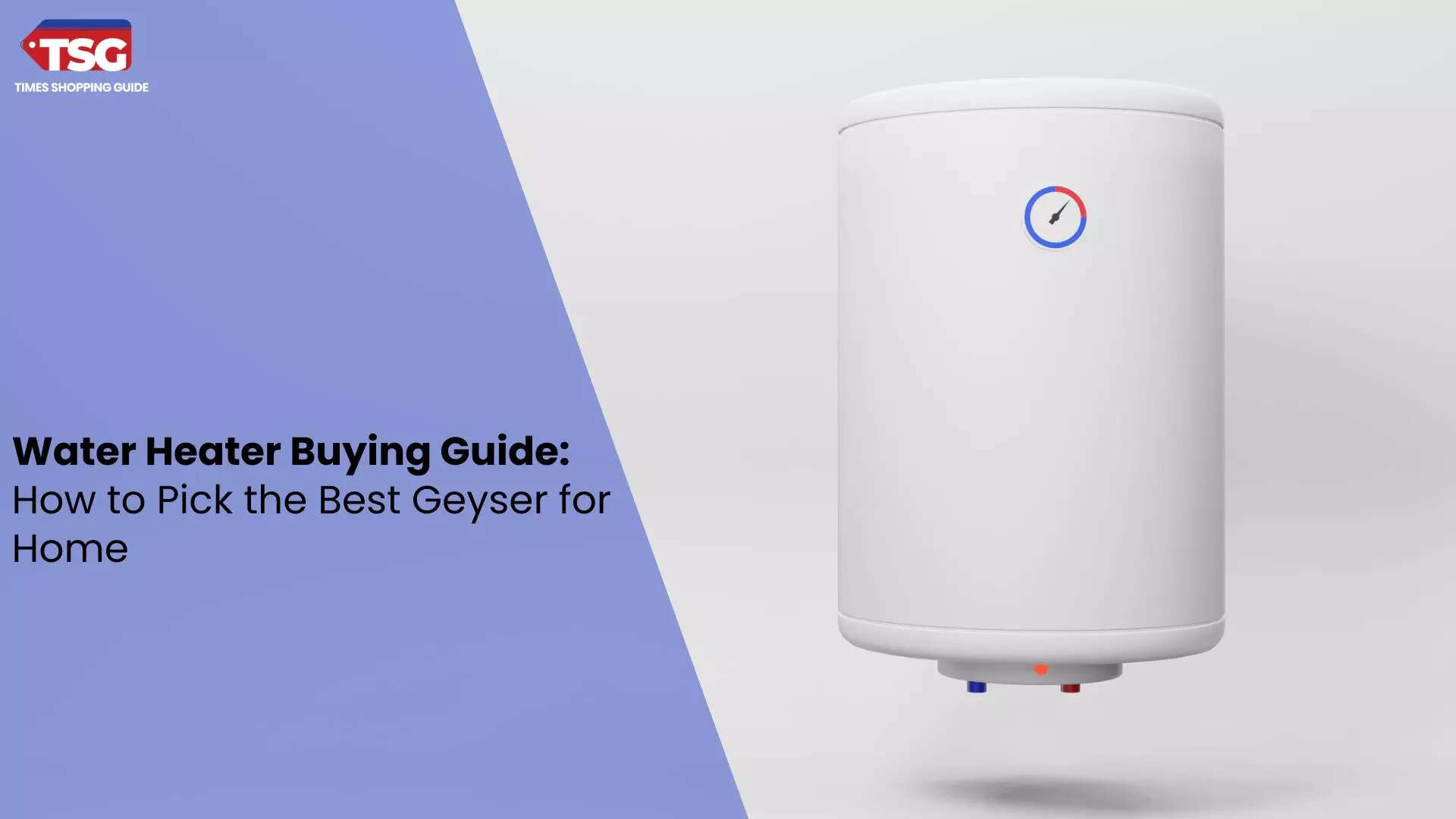- home
- appliances
- buying guide
- microwave oven buying guide tips to buy the right one for your kitchen
Microwave Oven Buying Guide: Tips to Buy the Right One for Your Kitchen
When selecting a new microwave oven for home, it’s best to understand the different types of microwaves with convection technology, what they can do for you, and how they will cater to your needs while being value for money. Our microwave oven buying guide has covered all the aspects to help you choose the best ovens to fulfil your requirements.

However, selecting the best microwave oven can be daunting, with various models and features available. This comprehensive buying guide will help you navigate the options and choose a microwave that suits your needs.
Microwave Oven Buying Guide: Types of Microwave Ovens
Understanding the different types of microwave ovens can help you make an informed decision based on your cooking needs and kitchen space.1. Countertop Microwaves
These are standalone units that sit on your kitchen counter. They are the most common type of microwave and are easy to install and use. Ensure you have enough counter space, and consider the microwave's size relative to your kitchen layout.
2. Over-the-Range Microwaves
These microwaves are mounted above the kitchen range, combining the functions of a microwave and a range hood. Installation is more complex, and you must ensure proper ventilation and clearance above your range.
3. Built-In Microwaves
These microwaves are built into the kitchen cabinetry or wall and offer a sleek, integrated look. Professional installation is often required to ensure compatibility with your kitchen’s design and cabinet space.
4. Drawer Microwaves
These microwaves, installed under the counter in a drawer configuration, offer easy access and a clean look. They are typically more expensive and require professional installation.
Also Read: Best OTG Ovens to Make Your Every Occasion a Celebration
Microwave Oven Buying Guide: Size and Capacity
Microwave Size
- Compact (up to 20 litres): This is ideal for small households or kitchens with limited space. It is ideal for basic reheating and cooking tasks.
- Medium (20-30 litres): A versatile size for average-sized families, accommodating various cooking needs.
- Large (30 litres and above): This is best for large families or those who frequently entertain. It provides ample space for cooking larger dishes.
Interior Dimensions
- Turntable vs. Flatbed: Turntable models have a rotating glass plate to ensure even cooking, while flatbed models use a stationary platform and additional technology to cook evenly without a turntable.
- Considerations: Ensure the interior dimensions suit the dishes and containers you plan to use.
Microwave Oven Buying Guide: Budget
When setting a budget to buy the best microwave oven, consider the balance between features and cost. Basic microwave oven prices typically offer essential functions like reheating and defrosting at a lower price, which is ideal for simple needs. Mid-range models provide additional features, such as auto-cook presets and sensor cooking, offering more versatility. High-end options include advanced functionalities like convection cooking and smart technology, reflecting a higher price tag. Assess your cooking requirements and desired features to determine the best fit within your budget. Investing in a quality microwave that meets your needs ensures better performance and long-term value.Microwave Oven Buying Guide: Power and Performance
Power Levels: Microwave power is measured in watts, typically 600 to 1200 watts. Higher wattage generally means faster cooking and better performance. Look for models with multiple power levels to handle different cooking tasks, from defrosting to reheating and cooking.
Inverter Technology: Inverter microwaves use a continuous flow of power for more even cooking and defrosting compared to traditional models that cycle on and off. They provide consistent heat and preserve the texture and flavour of food. They are ideal for delicate cooking tasks like defrosting seafood or melting chocolate.
Microwave Oven Buying Guide: Features and Functions
1. Pre-Set Programs: Many microwaves have pre-set programs for specific foods like popcorn, pizza, or beverages. These programs simplify cooking by automatically adjusting time and power levels. Look for a variety of pre-set options that match your cooking preferences.
2. Sensor Cooking: Sensors detect the moisture level in the food and adjust the cooking time and power accordingly. Ensures optimal cooking results and prevents overcooking or undercooking. It is helpful for frequently reheating or cooking a variety of foods.
3. Convection Cooking: Some microwave ovens have convection cooking capabilities, allowing them to bake and roast in addition to microwaving. Combining microwave and convection cooking provides versatility and can replace a traditional oven for some tasks. It is ideal for those who want a multi-functional appliance.
4. Grill Function: A grill function adds the ability to brown and crisp foods, similar to a traditional grill. Enhances the texture and flavour of dishes, especially for grilling or toasting. Look for adjustable grilling options and additional accessories if needed.
5. Child Lock: This safety feature prevents accidental use or tampering by children and ensures safety in households with young children. Verify that the child lock is easy to activate and deactivate.
Microwave Oven Buying Guide: Design and Aesthetics
When choosing the best microwave oven, design and aesthetics are crucial in complementing your kitchen’s style. Opt for a finish that matches your existing appliances, such as stainless steel, black, or white, to create a cohesive look. Consider the microwave’s size and shape to ensure it fits well within your kitchen’s layout, whether it’s a countertop, built-in, or over-the-range model. Sleek, minimalist designs with intuitive control panels and modern displays can enhance functionality and visual appeal. Choose a design that blends seamlessly with your decor and meets your practical needs and space requirements.Microwave Oven Buying Guide: Energy Efficiency
When selecting a microwave oven, energy efficiency is essential for both cost savings and environmental impact. Look for models with high wattage, as they cook more quickly and use energy more efficiently. Some microwaves feature an Energy Star rating or eco modes that reduce power consumption when not in use. Additionally, consider models with inverter technology, which maintains a steady power level for consistent cooking results and minimises energy waste. An energy-efficient microwave helps lower utility bills and supports a greener household, making it a practical choice for mindful consumers.Microwave Oven Buying Guide: Installation and Maintenance
Installation Requirements- Countertop Models: Ensure adequate counter space and proper ventilation.
- Over-the-Range Models: Check the installation requirements for proper ventilation and clearance.
- Built-In and Drawer Models: Professional installation is often recommended for a seamless fit and operation.
Cleaning and Maintenance
- Interior Cleaning: Clean the interior regularly with mild detergent and warm water. Avoid abrasive cleaners that can damage the surfaces.
- Exterior Cleaning: Wipe down the exterior with a damp cloth. Stainless steel models may require special cleaners to maintain their shine.
- Filter Maintenance: Clean or replace the grease and charcoal filters as the manufacturer recommends for over-the-range models.
FAQs
1. What should I check before buying a microwave oven?
Before buying a microwave oven, check the size and capacity to ensure it fits your kitchen and cooking needs. Assess power wattage for performance, review features like auto-cook settings and energy efficiency, and consider the design to match your kitchen decor.
2. How many litres of microwave should I buy?
Choose a microwave with a 20-30 litres capacity for average household needs. For larger families or frequent cooking, opt for 30 litres or more. Ensure the size suits your counter space and fits the commonly used dishes.
3. Is a 700-watt microwave powerful enough?
A 700-watt microwave is suitable for basic tasks like reheating and defrosting but may be slower for cooking. Consider a higher-wattage model, ideally 900 watts or more, for faster and more efficient cooking.
Disclaimer: Times Shopping Guide is committed to bringing you the latest products from the best brands. Our selection is based on market research and positive consumer feedback. Times Shopping Guide is also a part of an affiliate partnership. In line with this, we may receive a portion of the revenue from your purchases. Please note that the product prices are subject to change based on the retailer's deals.








